How Many Ohms Should a Crank Sensor Have?
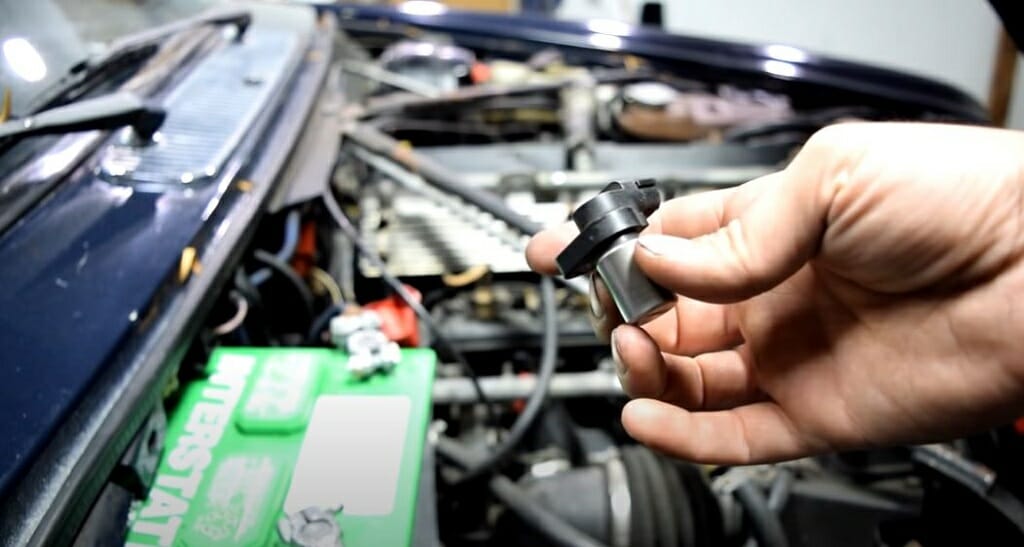
The ohm value is the easiest way to identify a bad crankshaft sensor. Therefore, knowing the right ohm range for a crankshaft sensor is crucial. Below, ill go into more detail and cover some other interesting facts.
Generally, a properly working crank sensor should have an internal resistance of 200Ω to 2000Ω. If the sensor shows a 0Ω value, that indicates a short circuit; if the value is infinite or a million ohms, there is an open circuit.
Different Crankshaft Sensor Ohm Values and Their Meanings
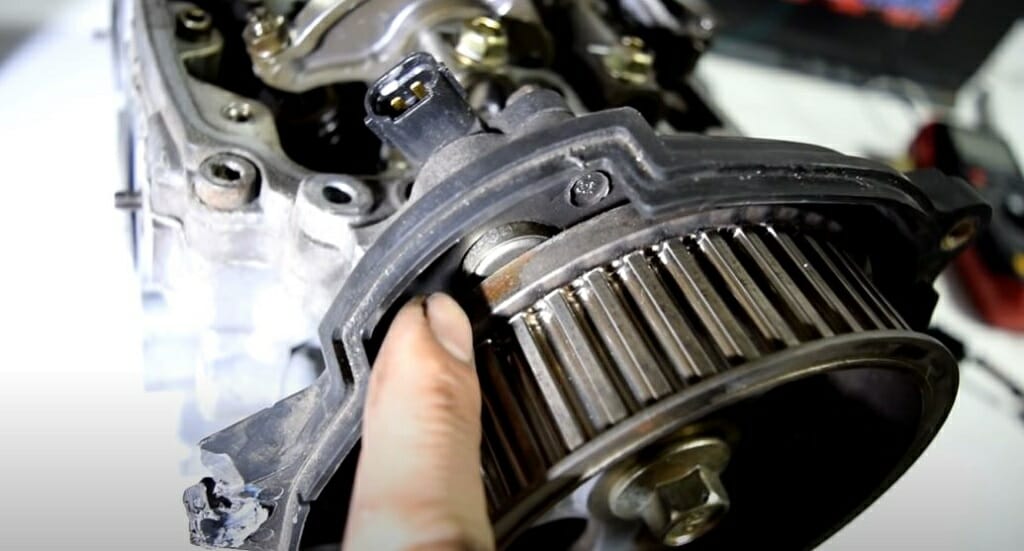
A crankshaft sensor can monitor the crankshaft’s position and rotation speed.
This process is vital for controlling fuel injection. A bad crank sensor might cause vehicle issues, such as engine or cylinder misfires, starting issues, or faulty spark plug timing.
You can identify bad crankshaft position sensors by their resistance. Depending on the vehicle model, the recommended resistance for a good crankshaft sensor will range between 200Ω to 2000Ω. In a few situations, you could get completely different readings for this resistance value.
What If I Get a Zero Ohm Value?
If you are getting a zero-ohm value, that indicates a short circuit.
A short circuit occurs due to damaged circuit wires or unnecessary contact of the wires, which will heat the circuits and cause all sorts of trouble. Thus, if you ever detect a zero-ohm value for the crankshaft sensor, try to repair it or replace it with a new one.
What If I Got an Infinite Ohm Value?
The other ohm value that you could get is infinite reading.
Suppose you are getting an infinite reading that indicates an open circuit. In other words, the circuit is broken. Hence, the current can’t flow. This could happen because of a broken conductor or loop in the circuit.
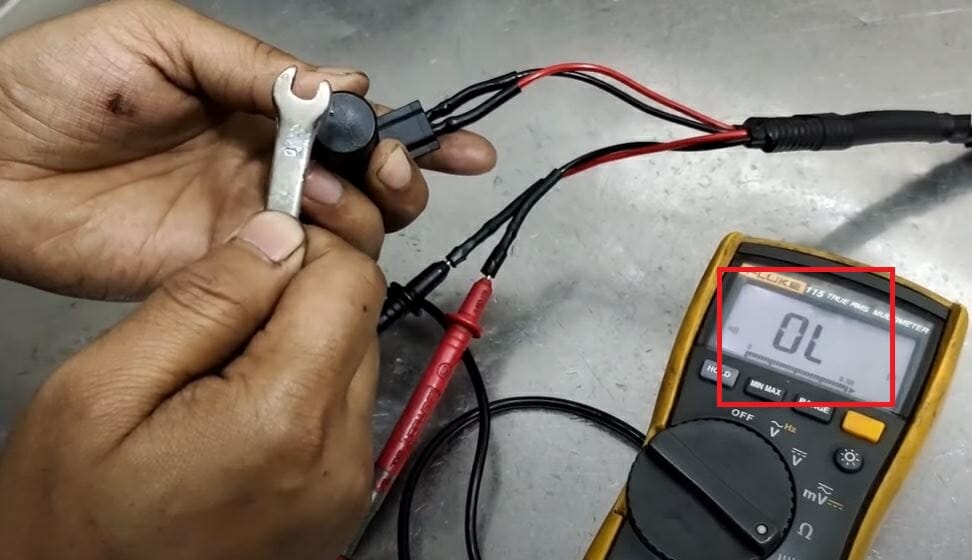
Quick Tip: In a digital multimeter, the OL symbol displays infinite resistance (open circuit).
How Can I Test a Crankshaft Position Sensor?
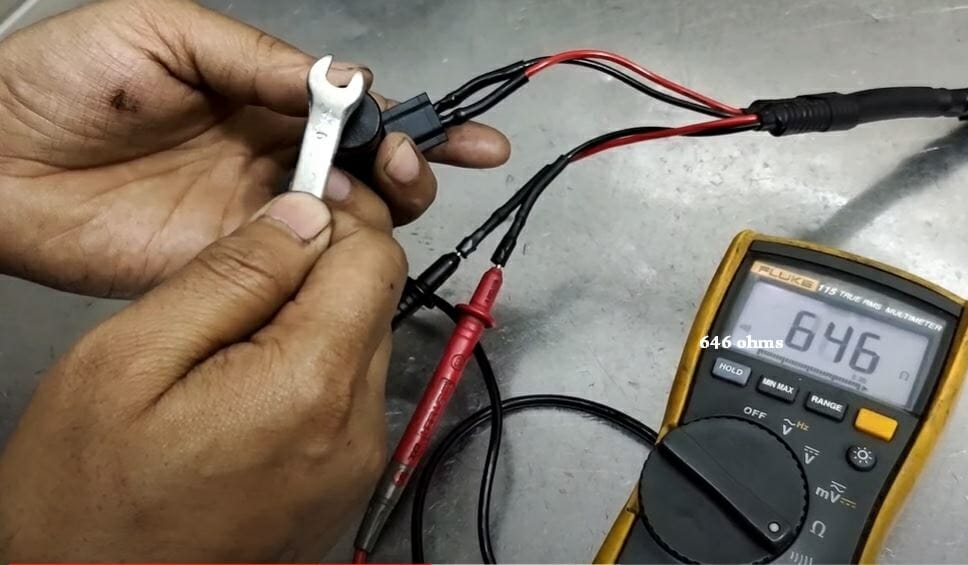
The crankshaft sensor testing process is not that difficult at all. You only need a digital multimeter for this.
- Separate the crankshaft position sensor from your vehicle.
- Set the multimeter to resistance mode.
- Connect the red multimeter lead to the first slot in the sensor.
- Connect the black multimeter lead to the other slot in the sensor.
- Check the reading.
- Compare the reading with your vehicle’s recommended ohm value for the crankshaft sensor.
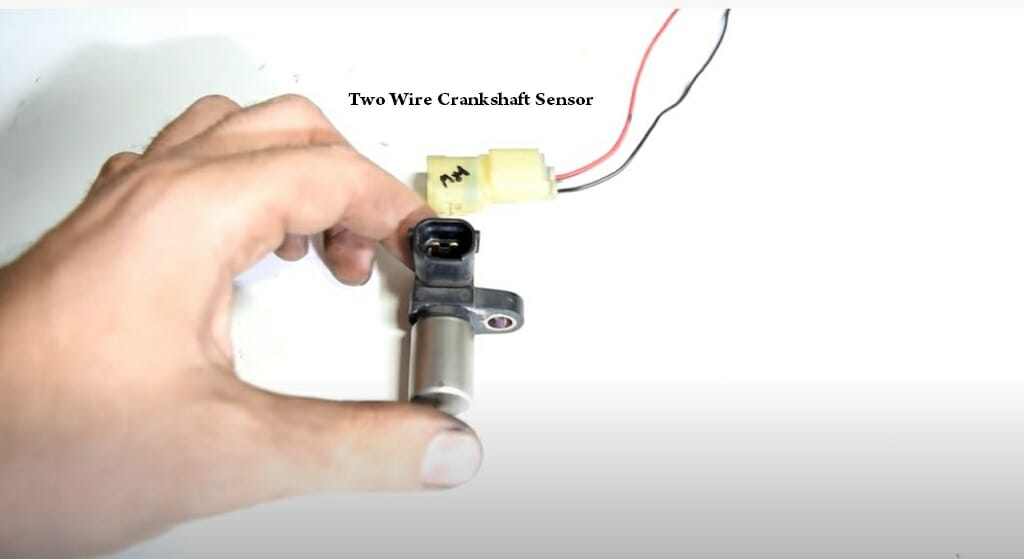
Quick Tip: Some crankshaft sensors come with a three-wire setup. If so, you must identify the signal, reference, and ground slots before testing.
FAQs
Can Crankshaft Sensor Ohm Values Be Zero?
You are dealing with a bad crankshaft sensor if the reading is zero.
Depending on the vehicle model, the ohm value should be between 200Ω to 2000Ω. For instance, the Ford Escape 2008 model’s crankshaft sensors range from 250Ω to 1000Ω internal resistance. So, referring to the vehicle’s repair manual is wise before jumping to conclusions.
What are the Symptoms of the Bad Crankshaft Sensor?
There are plenty of symptoms of a bad crankshaft sensor.
– Engine or cylinder misfire
– Trouble starting your vehicle
– Check engine light is ON
– Uneven acceleration
– Reduced gas mileage
The above five are the most common symptoms. If you detect any symptoms, use a multimeter to check the crankshaft sensor’s ohm value.
Are the Crankshaft Sensor and Camshaft Sensor the Same?
Yes, they are the same. The camshaft sensor is another term that is used for the crankshaft sensor. The crankshaft sensor is responsible for controlling the level of fuel needed by the engine.
References
Website Resources:
- Ford Escape 2008. https://www.edmunds.com/ford/escape/2008/review/
Books
- Fundamentals of Fuel Consumption by National Research Council. https://www.nap.edu/read/12924/chapter/4
Video References:
mechanic brother
Ratchets And Wrenches
